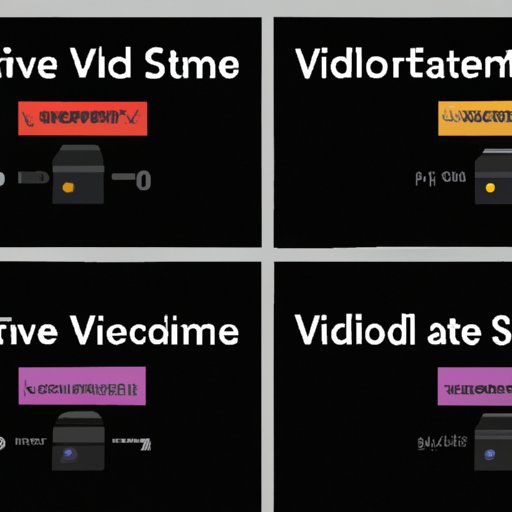
How to Reduce Video File Size
Videos are an integral part of modern communication and entertainment, but large video file sizes can be problematic when sharing or uploading them to the internet. Fortunately, there are several ways to reduce video file size, and this article aims to explore these solutions. In this article, we will discuss options such as compression software, video editing, adjusting resolution, converting formats, using cloud-based services, reducing frame rate, and cutting out unnecessary footage.
Compression Software
Compression software is a popular and effective tool for reducing video file size. The software works by compressing the video data without compromising quality. Popular compression software includes Handbrake, VLC, and 7-Zip. These software tools are straightforward to use and offer customization options for compression rates and output formats.
Advantages of using compression software include smaller file sizes, faster upload and download times, and increased storage capacity.
Video Editing
Video editing can also be used to reduce video file size. By removing unnecessary footage, cropping and resizing the video, or reducing bitrate or framerate, file size can be significantly reduced. In addition to its benefits of reducing video file size, video editing also allows for content improvement and eliminates unwanted elements that may detract from viewers’ engagement.
Advantages of video editing include smaller file sizes, improved content, and greater viewer engagement.
Resolution
Resolution plays a significant role in determining the size of video files. Higher resolution results in larger file sizes. It’s essential to choose the resolution that suits your project’s needs, as well as the platforms you plan on sharing your video on. Reducing the resolution may also mean sacrificing some image quality, so it’s recommended to find a balance between quality and file size.
Recommended resolution adjustments include using the native resolution of the camera when recording, considering the minimum resolution necessary for a project, and matching resolutions to the platform requirements.
Advantages of adjusting resolution include smaller file sizes, compatibility with different platforms, and efficient use of storage.
Convert Format
Video file formats can also significantly impact file size. Popular video formats include MP4, AVI, and MOV. Converting the video into a more efficient format can save considerable space without affecting quality. MP4 and H.264 are two of the most popular formats for online distribution.
Advantages of converting the format include smaller file sizes, backward compatibility with older platforms, and flexibility in encoding options.
Cloud-Based Services
Cloud-based services have gained traction as video-sharing platforms have increased in popularity. Services such as Dropbox and Google Drive offer storage and sharing capabilities, while YouTube and Vimeo provide hosting for videos. Hosting on these platforms saves space on local hard drives and allows for easy sharing and embedding.
Advantages of using cloud-based services include easy collaboration, effortless sharing, and unlimited storage capacity.
Reduce Frame Rate
Frame rate is the rate at which images appear in a video. Higher frame rates result in more fluid motion but also require more storage space. By reducing the frame rate, you can compress the video and reduce the file size. Common frame rates are 24, 30, and 60 frames per second (fps).
Recommended frame rate adjustments include using 30 fps for most videos and 24 fps for cinematic-style videos.
Advantages of reducing frame rate include smaller file sizes, more efficient streaming, and increased compatibility with different devices.
Cut out Unnecessary Footage
Cutting out unnecessary footage is another effective way to reduce video file size. Long pauses, scenes, or segments that are unrelated to the video’s overall message can be eliminated. Trim down the video to the essential parts of the message and eliminate any excess footage.
Advantages of cutting out unnecessary footage include smaller file sizes, more efficient use of storage, and a more focused message.
Conclusion
In conclusion, there are several ways to reduce video file size. Compression software, video editing, adjusting resolution, converting formats, using cloud-based services, reducing frame rate, and cutting out unnecessary footage are all effective solutions. It’s recommended to find a balance between quality and file size, taking into consideration the platform and audience.
Final tips for further reducing video file size include rendering video at the correct compression settings, minimizing transitions and special effects, and making necessary cuts. Reducing file size is an essential aspect of modern video production and distribution, and by following these solutions, you can ensure that your videos are accessible and fast-loading for viewers.
Feel free to share your thoughts and experiences in the comment section below.




